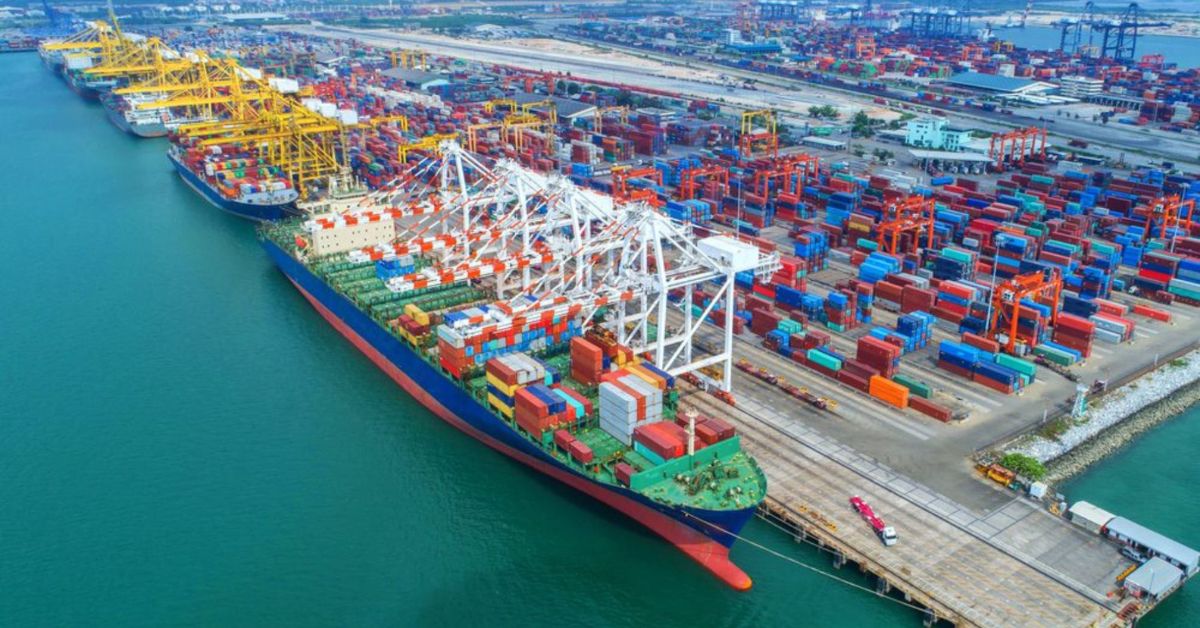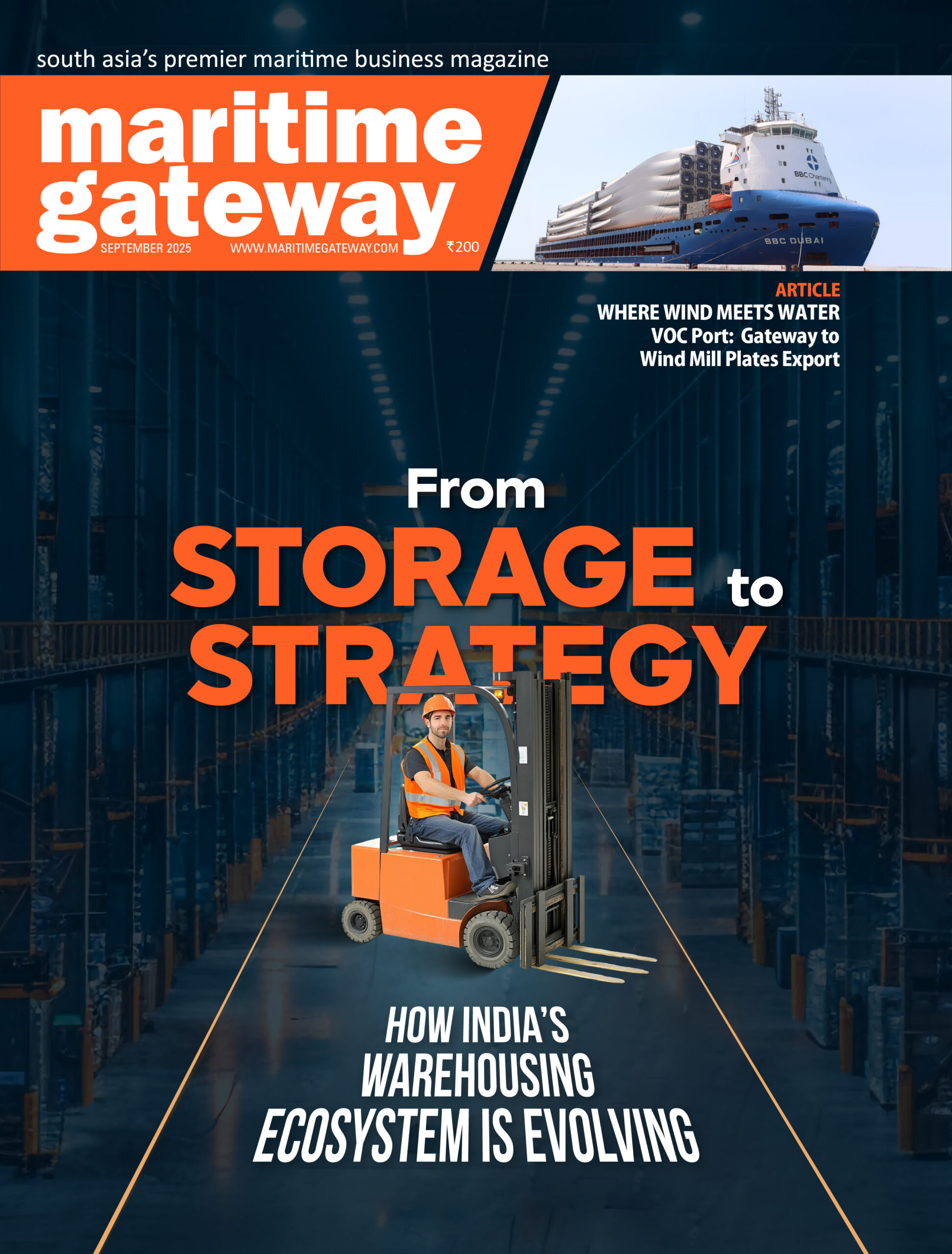The recently concluded India Ports Conference 2025 in Mumbai—aptly themed Unleashing Next-Gen Port and Logistics Infrastructure—was not just a gathering of stakeholders but a strategic moment of reckoning. It laid the foundation for the next phase of India’s port-led transformation, blending vision with actionable direction.
India’s maritime moment has arrived
India’s ports already handle over 90 per cent of the country’s external trade by volume. In FY 2024-25 alone, total cargo throughput at Indian ports reached 1,460 million metric tonnes (MMT), including a growing 22.7 per cent share of coastal cargo. Yet, despite this growth, only 25 per cent of India’s transshipment cargo is handled domestically—a statistic ripe for redress.
As global trade corridors realign and new supply chain dynamics emerge, India must transition from being a peripheral participant to becoming a central hub in global maritime logistics. The vision for 2047 positions Indian ports as smart, green, secure, and strategic gateways that can rival the best in the world.
Sustainability: From obligation to opportunity
Gone are the days when environmental compliance was merely a regulatory checkbox. Today, sustainability has become a critical differentiator for port competitiveness. International shipping is being increasingly dictated by carbon efficiency and climate alignment.
To lead in this evolving landscape, Indian ports must:
- Deploy shore power and infrastructure for green fuels, including green hydrogen and its derivatives
- Electrify port operations and adopt energy-efficient designs
- Join or initiate green shipping corridors with global partners
Frameworks such as the Harit Sagar Guidelines, green port reporting protocols, and forthcoming ESG mandates provide an operational roadmap for decarbonization. However, these transitions require more than intent—they need robust government support through climate finance, blended capital models, and policy clarity to enable rapid, rather than cautious, transformation.
Building smart ports with smart people
India’s ports must evolve not only in size but in intelligence. The next generation of ports will be defined by data, automation, and interoperability.
This demands full-scale integration of AI, IoT, and blockchain into logistics and trade platforms. Port systems such as ICEGATE, ULIP, the Logistics Data Bank, and Sagar Setu must converge into a unified national digital ecosystem. Strengthening cybersecurity through alliances such as the Maritime Transportation System Information Sharing and Analysis Center (MTS-ISAC) is equally critical.
However, digital infrastructure is only as strong as the talent behind it. India must cultivate a future-ready workforce—AI enablers, green engineers, data scientists, and port technologists—to sustain this transformation.
Ports as strategic assets in a changing geopolitical landscape
Ports are no longer passive trade enablers—they are vital geopolitical levers. As Asia’s share of global maritime freight has risen from 38 per cent in 2000 to 54 per cent in 2023, India is uniquely positioned to assert itself as a stable, reliable partner amidst global flux.
Mega port projects like Vadhavan, Galathea Bay, and Vizhinjam are not just infrastructure investments—they are strategic imperatives. They should be viewed as anchors of India’s partnerships with the Indo-Pacific, the Middle East, the EU, and Quad nations.
Bilateral and multilateral port development agreements, technology transfer frameworks, and maritime innovation partnerships must now form the cornerstone of India’s foreign policy in the maritime domain.
Indian Ports Association: Driving collective excellence
The Indian Ports Association (IPA) is working to ensure Indian ports move in unison—not in silos. Our focus areas include:
- Standardizing green port practices
- Coordinating sustainability benchmarks across major ports
- Enabling public-private partnerships for resilient infrastructure
- Acting as a bridge between global best practices and local implementation
We invite all stakeholders to engage with the IPA in building a proactive, industry-aligned institution capable of feeding real-time insights into national policy discourse.
The road ahead
The port of the future must be sustainable, smart, and strategically aligned. India must resist the temptation to simply expand legacy infrastructure. Instead, we must reimagine our ports as dynamic nodes in the global logistics chain—digitally enabled, environmentally responsible, and geopolitically strategic.
Let us remember: ports are more than gateways for goods—they are gateways for India’s global ambition. As the nation navigates toward 2047, it is the maritime sector that will anchor our economic and strategic ascent.
Let us build with vision. Let us lead with conviction. The future is on our shores.










One Response
“Cold Ironing” shore power supply for all vessel calling Indian ports must be done on priority to minimise the emission from ships berthed. This is essential as most of our ports are in thickly populated cities, where we are encouraging EV to reduce CO2 emission.
Lungs related sickness are more common with people living in such polluted cities. We must minimise the emission from large ships by supplying shore power and stopping the ship’s diesel generators.